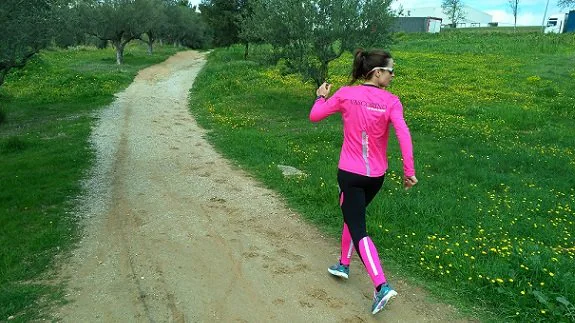Running backwards is good for health
Fewer injuries, better performance in races and stronger muscles. These are just some of the benefits of a sport which is said by those who practise it to be more exciting and interesting than forward running
RUBÉN CAÑIZARES
Miércoles, 24 de mayo 2017, 16:31
In 2005, a group of German, Austrian, Swiss and French athletes created the first international retro running association, to make running more exciting. At the time, that was something brand new in the world of sport. Twelve years later, thousands of people all over the world are practising retro running, not only because it is so unusual and enjoyable but also for its numerous and significant benefits for the body and for health.
I have had fewer injuries and my performance in forward running has improved. My muscles are also more compensated and stronger, because in retro running you use the antagonist muscles which are exercised in forward running, and by combining them you gain muscular balance, explains Sandra Corcuera, the Spanish star of this sport.
This Catalan athlete, five times world retro running champion (2012, 2014 and 2016) over 1,500 and 10,000 metres, found herself obliged to take up this sport. After seven years as a professional athlete, her body had had enough and she needed to reinvent herself.
Ever since I was little, I have been very active. Artistic gymnastics, tennis, swimming, cycling, fitness, aerobics... Ive done them all, but in the year 2000 I discovered the world of athletics and I loved it. I was very good, or so my trainers told me, but I didnt concentrate enough on my training and suffered frequent injuries, says Sandra, who spent more time laid up than enjoying her favourite sport.
Looking for a solution, she decided not to take athletics so seriously and to compete at a low level until one day, in 2007, her sporting life took a 180-degree turn.
I was looking on the internet for races to compete in, and I saw one called a retro running race. I had no idea what it would entail, but I decided to do it. When I arrived and they told me I had to run backwards, I thought they were joking, but no. Thats exactly what it was. Running backwards. It was the hardest 1,500 metres of my life,she says.
When Sandra returned home, she set about finding out exactly what retro running was, and that is when she discovered that there was a solution to her injury problems.
I read that in the United States, some doctors, athletes and trainers were using it to recover from knee injuries and they included it in their training as a way of preventing injury, because practising it gives you a more proportionate musculature. As I had so many injuries, I started including 15 minutes of retro running in my training, and was surprised to find that within a short time the injuries had gone, she explains.
Numerous biomechanical studies have been carried out to explain the benefits of this unusual type of running. The speed and the distances to be run are lower, so we are talking about races which are low-impact for the knees. Also, retro running is included in different physiotherapy programmes because it improves the stability of the trunk, the posture and the compensatory musculature. By that, I mean the extensor muscles: buttocks, lumbars and hamstrings, says renowned traumatologist César Quesada de la Gala, head of medical services at Elche FC and medical director of Ripoll and De Prado.
A few months ago, the University of Oregon (USA) published the results of a trial which revealed that retro running, as well as preventing injuries, used up about 30 per cent more calories than running in a race, improved aerobic capacity and proprioception, improved the relationships between agonist and antagonist muscles, and boosted performance based on more balanced muscles.
Running backwards doesnt use the same energy as normal running. It requires more effort, so you gain strength. It also helps to develop neuro-muscular functions because it involves greater coordination and balance, explains Dr Quesada de la Gala.
The key is to practise it sensibly, just like any other sporting activity. The distance to be run needs to be increased gradually, and during the process the correct technique has to be learned, just as in swimming or playing tennis.
Your vision is reduced, so you need to run on flat land with no obstacles or traffic. Thats why an athletics track is probably most suitable when you begin retrorunning, because you can follow the lines. In the early days you should alternate walking with running, while you become more secure and perfect your posture. The body should tilt slightly forward, the leg should be stretched back, and you land and take off from the front part of your foot, like a lever. You know if you are doing this exercise correctly if someone films you running backwards and, when you rewind the video, it looks as if you are running forwards.
It is best to use shoes with a low drop (the difference in height between the heel and the toe), about four milimetres, not too heavy, which favour the forward tread. Then, just go out there and enjoy the world of retro running, says Sandra.
